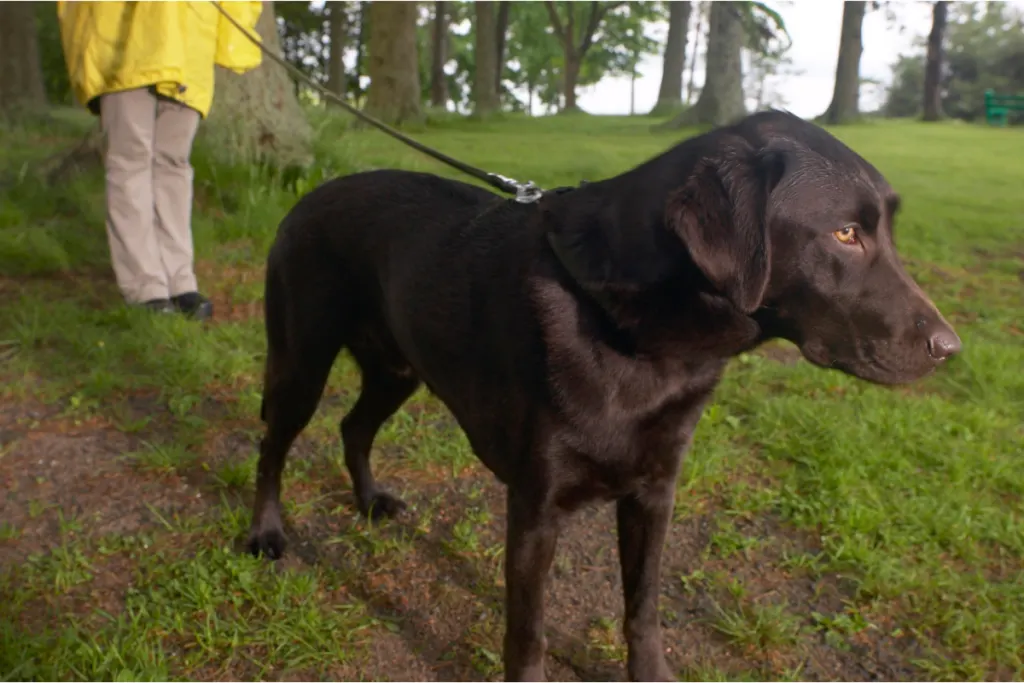Labrador Retrievers are renowned for their exuberant energy, playful nature, and boundless enthusiasm for physical activity.
These loving companions thrive on exercise and outdoor adventures, making them the perfect canine partners for active families.
However, to ensure your Labrador remains happy, healthy, and well-adjusted, it’s essential to understand and implement proper guidelines for their physical activity.
In this comprehensive guide, we will delve into the crucial aspects of physical activity for Labrador Retrievers.

Whether you’re a seasoned Labrador owner or a first-time puppy parent, these insights and recommendations will empower you to provide your four-legged friend with the exercise and stimulation they need to lead a fulfilling and vibrant life.
Understanding Labrador’s Energy Levels
Labrador Retrievers are known for their high energy levels and zest for life.
These dogs have a natural drive to be active and engaged, which is deeply ingrained in their breed’s history as working retrievers.
Labradors are often described as perpetual puppies, even in adulthood, with an abundance of enthusiasm for physical activities.
It’s crucial to recognize and appreciate these energy levels to provide your Labrador with the right amount of exercise.
Failing to meet their activity needs can lead to boredom, anxiety, and undesirable behaviors, such as chewing or digging.
By understanding their innate energy, you can harness it to foster a strong, healthy bond and ensure a happy and well-adjusted Labrador.
Daily Exercise Requirements
Labrador Retrievers have relatively high daily exercise requirements to maintain their physical and mental well-being.
On average, an adult Labrador should engage in at least 60 to 90 minutes of exercise each day.
This can be achieved through a combination of activities, including brisk walks, playtime, and structured exercise sessions.
Puppies, on the other hand, have different needs and should engage in shorter, more frequent play and exercise sessions throughout the day to prevent overexertion due to their developing bodies.
The key is to strike a balance, providing enough exercise to satisfy their energy levels without overworking them.
Meeting these daily exercise requirements ensures your Labrador remains physically fit, mentally stimulated, and content, contributing to a harmonious and fulfilling life together.
Types of Physical Activities

Labrador Retrievers are versatile and enjoy a wide range of physical activities.
Walking is a fundamental exercise that provides both physical and mental stimulation.
Regular brisk walks around the neighborhood or in a nearby park help your Labrador burn off excess energy and engage with their surroundings.
Running or jogging is excellent for high-energy Labradors and can be a great bonding activity for active owners.
Retrieving games, such as fetch or frisbee, tap into their natural retrieving instincts and provide an excellent workout.
Water activities, like swimming or playing in a pool or lake, are particularly enjoyable for Labradors due to their love of water.
Interactive toys, like puzzle feeders or treat-dispensing toys, offer mental stimulation and keep your Labrador engaged.
It’s important to vary the types of activities to prevent boredom and to tailor them to your Labrador’s age and fitness level.
Puppy Exercise vs. Adult Exercise
Exercise needs differ between Labrador puppies and adults.
Puppies have developing bodies and should not engage in strenuous exercise or activities that could impact their joint health.
Short, frequent play sessions and controlled walks are ideal for puppies to build their stamina gradually.
In contrast, adult Labradors can handle more intense exercise, such as running or hiking.
As they grow, it’s essential to adjust their exercise routine to suit their changing needs.
Pay attention to your Labrador’s energy levels, and adapt the type and duration of exercise accordingly.
Consulting with your veterinarian can help determine the appropriate exercise regimen for your Labrador at each life stage, ensuring their long-term health and well-being.
Exercise Safety and Considerations:
Safety should be a top priority when engaging in physical activities with your Labrador.
Always ensure that your Labrador is wearing proper identification tags and is under control when in public spaces.
Use a sturdy leash and harness to keep them secure during walks and outings.
Be mindful of the weather conditions, as Labradors are sensitive to extreme heat and cold.
During hot weather, exercise your Labrador during cooler parts of the day, and provide plenty of water breaks.
In colder weather, protect your Labrador with appropriate gear, such as a dog coat or boots, to prevent frostbite.
Pay attention to signs of exhaustion or overheating, such as excessive panting or lethargy, and adjust the intensity and duration of exercise accordingly.
Providing a safe and comfortable exercise environment ensures your Labrador’s well-being during physical activities.
Mental Stimulation
Labrador Retrievers not only need physical exercise but also mental stimulation to stay happy and engaged.
Mental exercises, such as obedience training, puzzle toys, and interactive games, challenge your Labrador’s intellect and prevent boredom.
These activities can tire them out mentally, often just as effectively as physical exercise.
Mental stimulation is particularly important for Labradors as it helps prevent undesirable behaviors that may result from boredom, such as destructive chewing or digging.
Incorporating mental exercises into your Labrador’s routine is an excellent way to keep them sharp, focused, and content.
Exercise Challenges and Solutions
Various challenges may arise when it comes to providing adequate exercise for your Labrador.
Weather constraints, such as extreme heat or heavy rain, can limit outdoor activities.
In such cases, consider indoor exercise options like interactive games or using a treadmill designed for dogs.
Time constraints due to a busy schedule can also be challenging.
To overcome this, break exercise sessions into shorter, more frequent intervals or enlist the help of a professional dog walker or pet sitter.
Additionally, not all Labradors are equally enthusiastic about exercise, and some may have health issues or physical limitations.
It’s essential to tailor exercise routines to your Labrador’s individual needs and consult with your veterinarian if you have concerns about their ability to engage in physical activities.
Overcoming exercise challenges ensures your Labrador receives the necessary physical and mental stimulation to lead a happy and healthy life.
